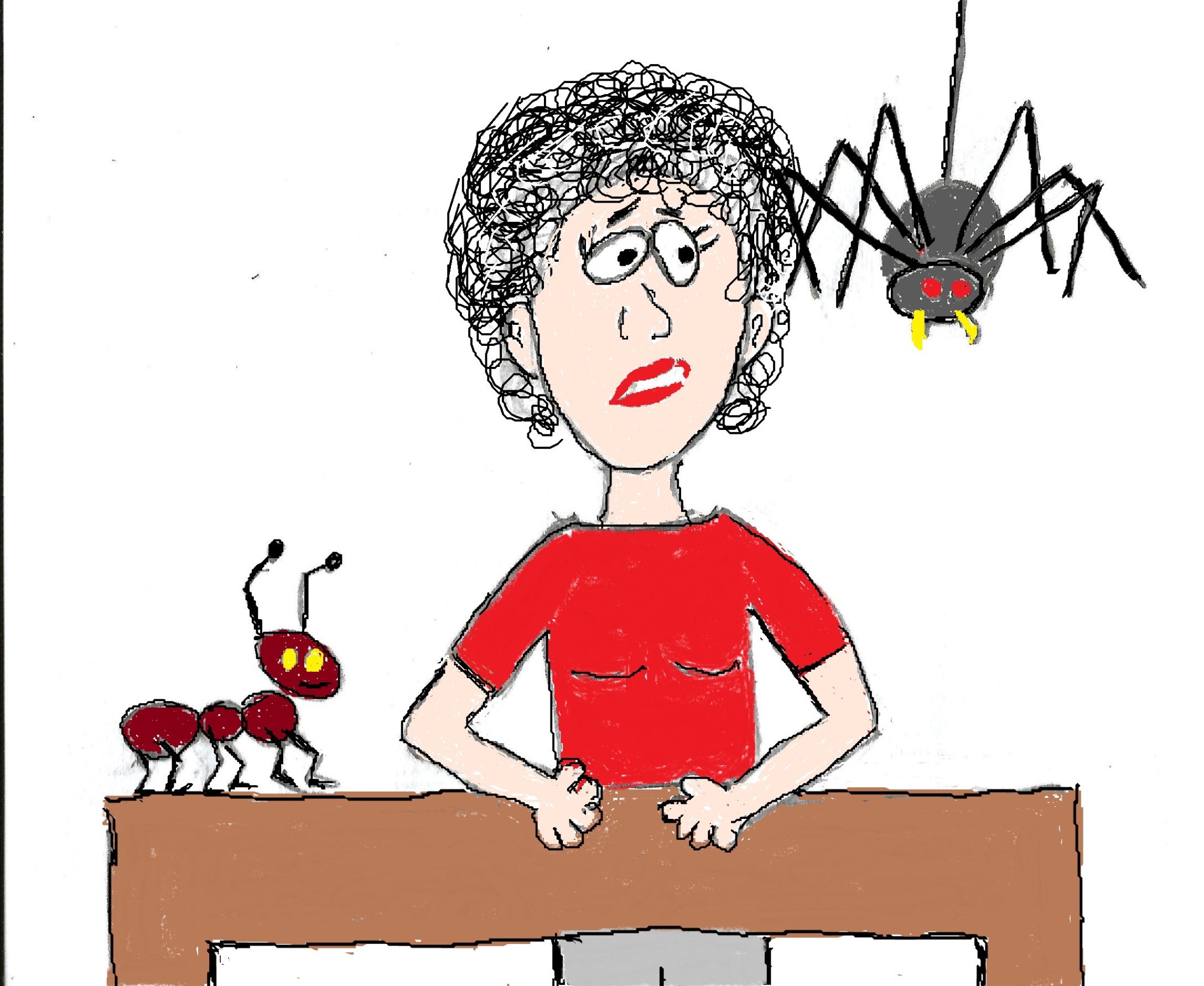- Home
- Non Toxic Home
- Dog Fleas
How to Safely Protect Your Pup From Fleas
Preventing dog fleas and ticks doesn't have to poison your pets or you. If you reach for flea collars, flea dip and powders or topical drops to control dog fleas you’re exposing your pups to dangerous pesticides.
You are also exposing yourself and your family to these toxins. The good news is there are plenty of safe and effective alternatives to flea insecticides.
Pesticides on Your Pups
Any pesticides that you use in your home or yard or on your dogs can make them sick. The smaller bodies of dogs make them more susceptible to chemicals, and their behaviors make them more likely to be exposed to toxic pesticides.
They walk through chemically-treated areas unknowingly, sniff weeds treated with herbicides, absorb pesticides through their mouth, nose, and eyes, and can absorb through their skin any powder that sticks to their fur.
Cancer is one of the most well-known health risks to dogs from insecticide and herbicide exposure. It might surprise you to know that the current rate of cancer in dogs is higher than it is in humans.
The home, yard and flea pesticides that your pups are exposed to contribute to high rates of breast, skin, bone, oral and connective tissue cancers and lymphoma in dogs of all ages. And cancer is the leading cause of death in dogs over 10 years.
The Risks to Your Health
When you dip your dog for fleas, pet them when they are wearing flea collars, spray, shampoo or dust them with flea insecticides – you are exposing yourself to chemicals that cause cancer and mess with your hormones.
These chemicals linger on your pets, exposing you for days or weeks after the products are applied. A 2009 study found that after 3 days wearing a flea collar, dogs had enough insecticide on their fur to exceed the EPA's acceptable dose level for toddlers. Studies have also shown that fipronil (found in topical drops) residues from pet fur can be transferred to anyone touching the area where it is applied.
Young children are most at risk for exposure because of their small size, developing bodies and behaviors. Plus, children often spend a lot of time hugging, stroking, and sleeping with their pets.
Dog Flea Chemicals to Avoid
The most
toxic chemicals for dog fleas are found in over-the-counter products like
flea collars, dips, powders and topical drops. To protect your health and your
dog’s health avoid using these products or any product that contains the following
chemicals. This information is from the National Resources Defense Council.
|
Permethrin (Pyrethroid) |
Health Effects |
|
Fipronil |
Health Effects |
|
Amitraz |
Health Effects |
|
N-Octyl Bicycloheptene Dicarboximide |
Health Effects |
Natural Flea and Tick Approaches
There are lots of nontoxic ways to prevent and control dog fleas and ticks on your furry family. Because I've had canine companions my whole life and don't use toxic chemicals, I have tried them all!
The first thing you need to know is that natural flea remedies are not as convenient as the toxic versions.
The second thing you need to know is protecting you and your pets health by avoiding exposure to these toxins is worth the effort. And really, with the exception of when I first brought Molly home, I've never had an out-of-control dog flea or tick problem using natural repellents.
Note:
If your dog is severely allergic to fleas or you live in a tick infested area, natural methods may not be an option.
Natural Flea and Tick Remedies
|
Using a Flea Comb |
Combing fleas off your dog and drowning them in soapy water is effective. I think it's tough to do on long haired dogs. |
|
Bathing |
Soapy baths, with a natural soap, not with flea shampoo control fleas. |
|
Dog Bedding |
Wash dog bedding often to prevent fleas. |
|
Maintain Outdoor Areas |
Keep grass clipped short in areas where your pet spends time. Nematodes, available at garden supply stores, can be used as a nonchemical, biological aid to help control fleas in your yard. |
|
Natural
Products |
Essential Oils Diatomaceous Earth - Food Grade Only Diatomaceous Earth is a fine powder made from diatoms. It works by cutting the exoskeleton of fleas, causing them to dry out and die. Neem Bark Powder. Neem bark contains Azadirachtin, which repels insects and soothes the skin. |
My Favorite Natural Flea and Tick Remedies | |
|
Wondercide Flea and Tick Control made from cedar oil, is my favorite natural insecticide. I spray it on Molly to repel ticks during walks in the woods and to control fleas. I spray it on her bedding and use it as a preventative "dip" when she gets a bath. I also make a flea and tick repellent powder with 2 parts Diatomaceous Earth and 1 part Neem Bark Powder. I put this in a shaker and dust this on her once a week. Molly has allergies and both the Wondercide and the neem bark powder seem to soothe her skin. I also sprinkle neem on her food to help with allergies and digestive issues. The beauty of this 3 products, besides the fact that they really work and are safe to use, is that you can also use them in your home to prevent flea infestations. If you want to find additional options or to see how toxic your current flea prevention approach is, check out NRDC's GreenPaws Flea and Tick Products Directory. |
As a dog parent you want the best for your furry family members. Making sure they are free of ticks and fleas is part of keeping them healthy and happy. You can do this without exposing your pets or yourself to dangerous insecticides by using natural flea prevention methods.





